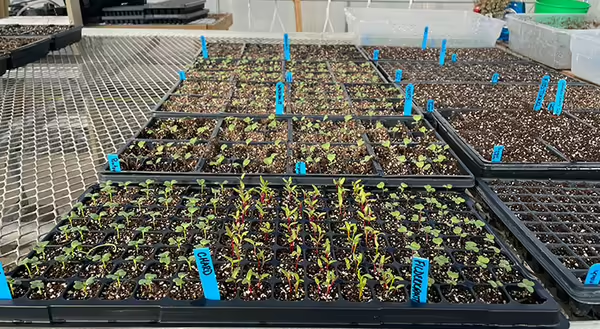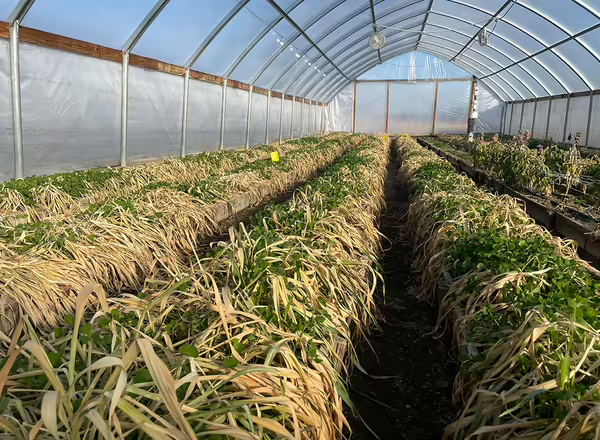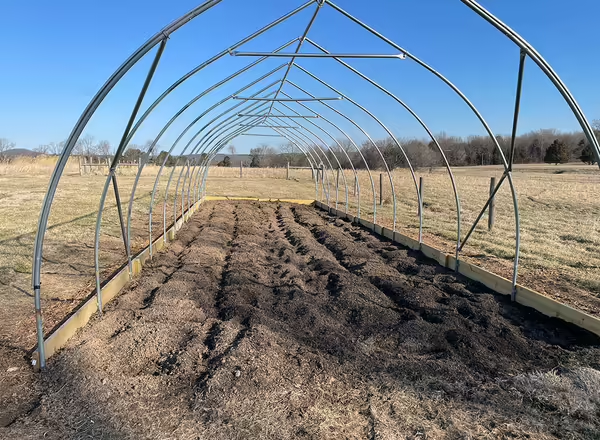
The latest addition to the demonstration tunnels at the Dixon Springs Ag Center is a caterpillar tunnel. The site was selected late last summer and the grass was sprayed with a burndown herbicide. Compost has been added and incorporated into the native soil. Crops planned to be grown in this tunnel include early, cool-season crops like cauliflower, kale, swiss chard, broccoli, etc. followed by lettuce. Instead of covering this tunnel with plastic, we plan to utilize row cover as needed over the early transplants and then cover the tunnel in a 30% shade cloth for summertime lettuce production. This particular tunnel is 14 feet wide, 50 feet long, and 10 feet tall at the peak. Most caterpillar tunnels don’t have baseboards but we decided to add them to provide another point of attachment for the cover and add a bit more stability. The ability to modify tunnels, whether high tunnels or caterpillar tunnels, to meet individual production needs or personal preferences makes them a versatile tool in specialty crop production.
Seeds have germinated and been potted up into transplant trays for the early, cool-season crops. Pepper seeds were placed in the germinating trays on heat mats on February 14 and have emerged this first part of this week. Tomatoes won’t be seeded until the end of next week, as they generally take about 6 weeks to grow out and be ready for planting.
The cold blast that was experienced in January did in fact winter kill the spring oat cover crop. A photo from last month didn’t indicate as much damage as expected, but as with many things in life, a lesson of patience was learned. The crimson clover has really started growing in the last week or so and the spring oats are creating a nice mulch of dead biomass on the tops of the raised beds in the high tunnel.

